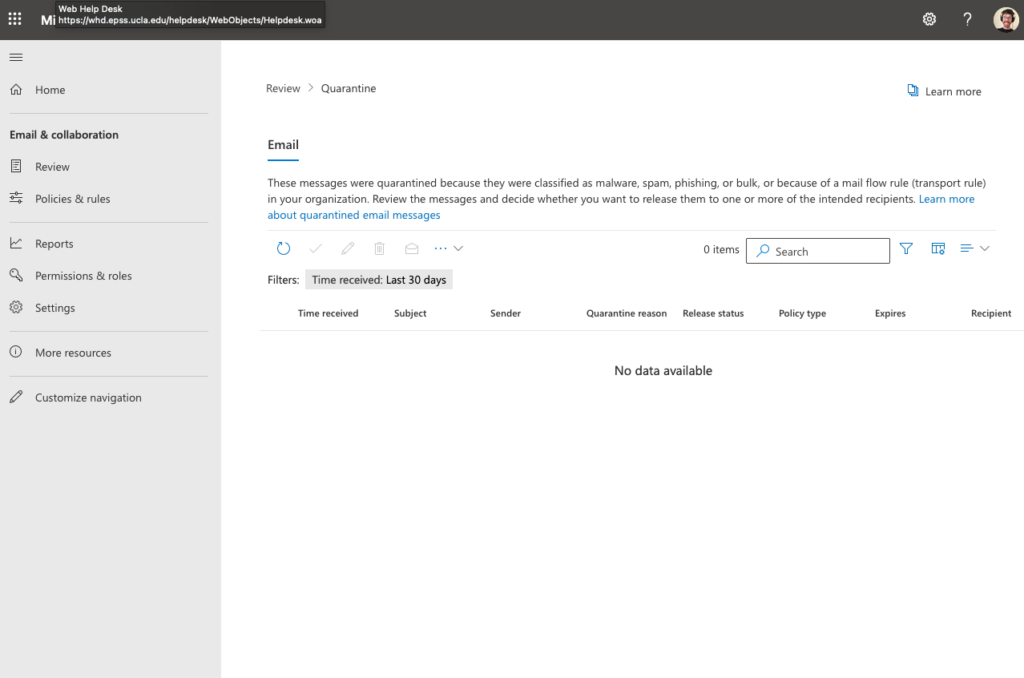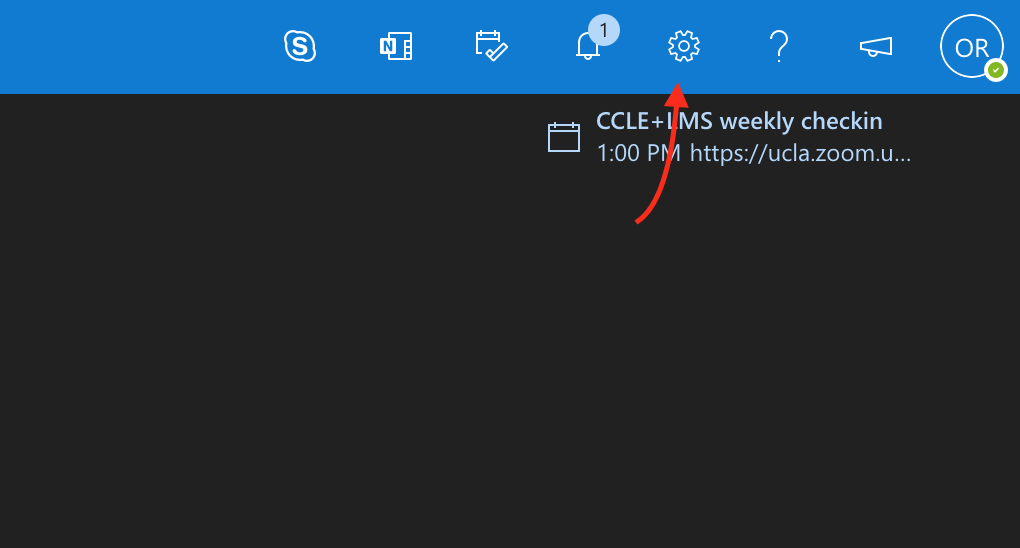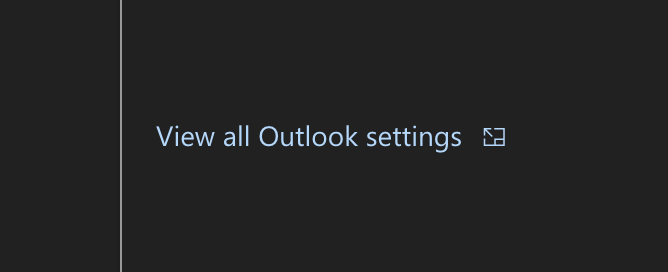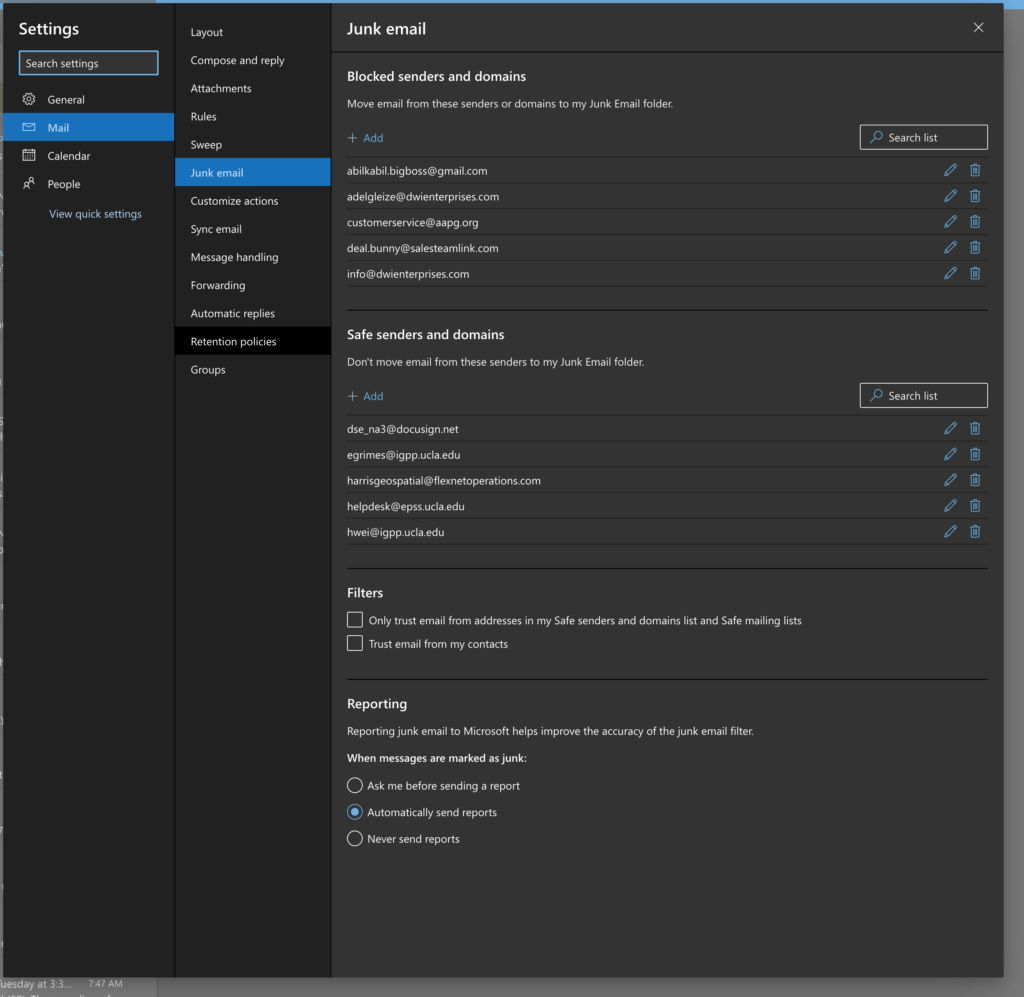This post will outline the different options and services related to email in EPSS. For UCLA policy related to allowable use of both email services, please see this document: https://ucla.app.box.com/v/allowable-data-use-office-365
Google Apps
All UCLA community members are eligible for free google apps accounts, and email addresses with domain @ucla.edu and @g.ucla.edu. To learn more, and to set up yours, please visit: https://g.ucla.edu/.
Google apps accounts are lifetime accounts for all academic appointments, and students who hold a degree. UCLA also provides lifetime email forwarding for your @ucla.edu address. For account retention and access after leaving ucla, please see this page from IT Services: https://ucla.service-now.com/support?id=kb_article&sys_id=KB0010842
Department Email Accounts
Faculty, Researchers, Staff, and Postdoctoral Scholars in EPSS are all eligible for a departmental email account, (username@epss.ucla.edu) provided by Enterprise Messaging. While an individual has an active employment relationship with EPSS, this account will remain active. Unfortunately, due to the funding structure for these accounts, we cannot provide lifetime access to the departmental account after an employment relationship has been terminated. Only faculty members who retire from EPSS may keep these accounts after retirement from the university.
Graduate students may be granted a departmental email address if they are employed as a GSR or TA, however this is not a requirement. EPSS IT staff recommend that graduate students consider the implications of using a departmental email address as their primary email while at UCLA for the reasons outlined above (you cant take it with you). Please reach out to help@epss.ucla.edu if you need clarification.
Mailing lists
EPSS also works with Enterprise Messaging to provide mailing list capability to department members. These are available to all faculty, Researchers and Staff in EPSS. Grad students and student organizations should contact the helpdesk to inquire about options. All department members are added to a mailing list which they cannot leave (until graduation or separation ) for the purposes of department and other official communications. There are also many individual lists for Labs, interest groups, and interdisciplinary collaborations and initiatives.
To request a new mailing list, please email help@epss.ucla.edu with the following information:
- desired list address (@epss.ucla.edu)
- a responsible party in EPSS to act as “list owner”
- the ucla login of any administrators or moderators you wish to add.




